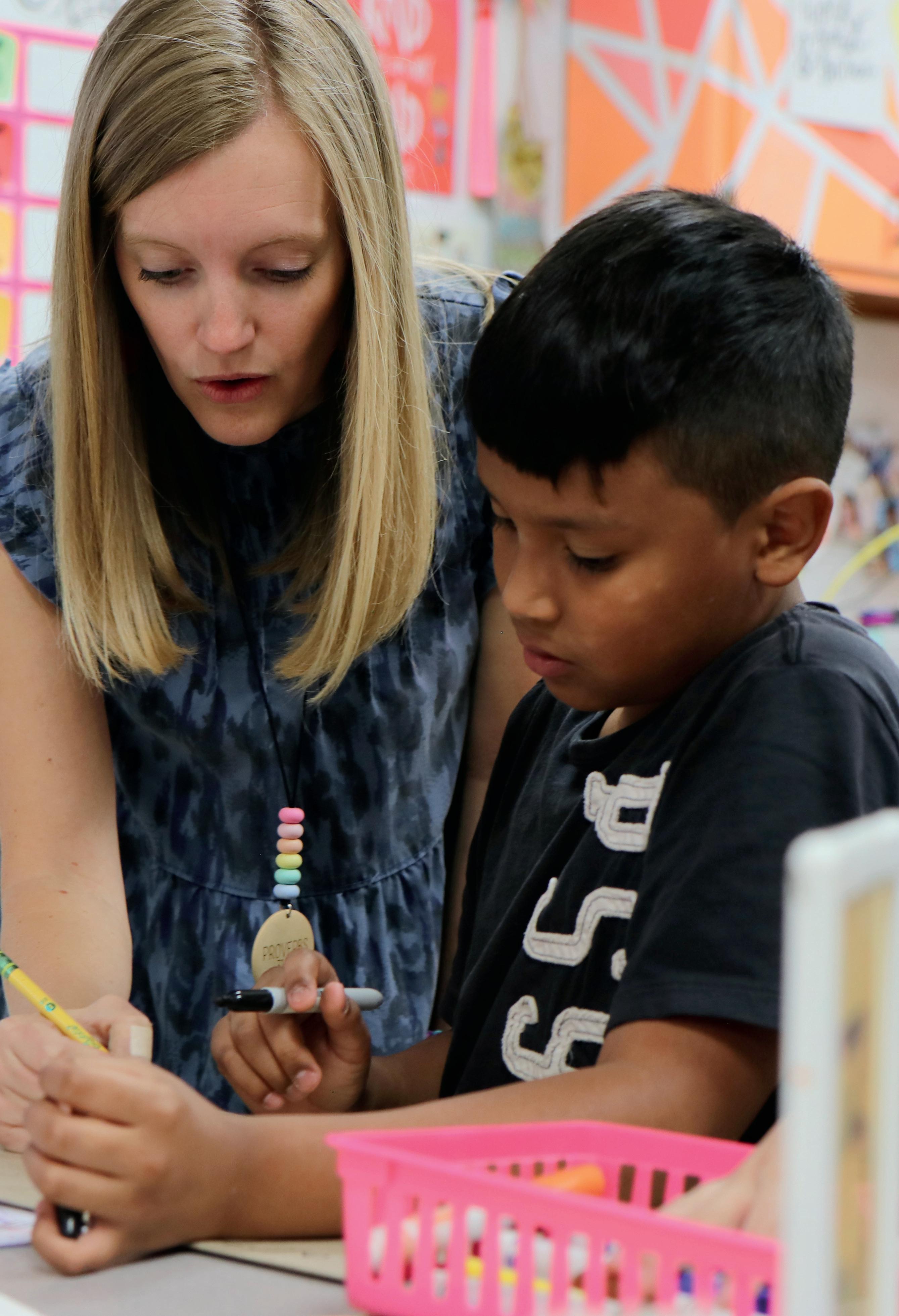
3 minute read
Priority 2 Teaching and Learning
Teaching and Learning
Priority 2 Teaching and Learning
Advertisement
GOAL: Employ a growth model continuum for students. Data analytics, planning, and evidence of learning operate in a feedback loop. CCS will personalize learning for students, increase precision of instruction, and engage students, parents and caregivers.
4 Year Graduation Rates By Demographic
Asian 100% Black 88.2% Hispanic 80.2%
OBJECTIVE 1: Nurture the culture of high expectations with each student having access to rigorous core instruction as the norm regardless of race, ethnicity, ability, gender, socioeconomics, or other marginalized groups. Provide high quality professional development around the science of reading, professional learning communities, and lesson study. Define key look-fors of high-quality teaching and learning. Develop and implement a district-walkthrough tool. Collect and determine existing practices that increase access to advanced academic opportunities for all students. Provide professional development on a continuous cycle of school improvement.
Multi-racial 83.3% Other 92.9% White 91.3%

OBJECTIVE 2: Close gaps in achievement, ensuring access for all students. Develop an assessment system that informs instruction and monitors student mastery of reading and math standards. Provide professional development and coaching support on data disaggregation protocols that look at multiple metrics to support individual student growth and subgroup proficiency in reading and math. Implement quarterly school cohort data meetings to evaluate student growth in reading and math using multiple data sources (benchmarks, behavior, student wellness, and classroom walkthrough data). Provide professional development and resources on student-centered assessments and goal setting to allow students to be engaged and co-authors in their learning journey. OBJECTIVE 3: Identify opportunities for improvement with educators analyzing data programatically, racially, and socioeconomically. Evaluate Program Choice and CTE to evaluate pathways and access as it relates to equity and access for all students across the district. Implement action steps to address disproportionality related to exceptional children’s subgroup. Create varied pathways for intervention and/ or acceleration of student learning based on personalized and individual learning plans that are equitable and inclusive.
K-8 End-of-Grade Analysis
L L A PION FOR HAM C OPPORTUNITIES FOR GROWTH (cont.) Teacher Retention
Cabarrus County Schools’ teacher attrition rate is currently above the state average.
91.0%
2 6
42.3% 80.2% 83.3% 92.9% 91.3%
WhiteOtherMulti-racialHispanicBlackAsian Asian Black Hispanic Multi Other White Math

L L A PION FOR HAM C OPPORTUNITIES FOR GROWTH (cont.) Teacher Retention
Cabarrus County Schools’ teacher attrition rate is currently above the state average.
84.6%
2 6
44.1% 39.2% 56.1% 60.5% 67.9%
WhiteOtherMulti-racialHispanicBlackAsian Asian Black Hispanic Multi Other White Reading
L L A PION FOR HAM C OPPORTUNITIES FOR GROWTH (cont.) Teacher Retention
Cabarrus County Schools’ teacher attrition rate is currently above the state average.
94.6%
2 6
63.9% 61.8% 75.5% 88.0% 86.1%
WhiteOtherMulti-racialHispanicBlackAsian Asian Black Hispanic Multi Other White Science
High School End-of-Course Analysis
L L A PION FOR HAM C OPPORTUNITIES FOR GROWTH (cont.) Teacher Retention
Cabarrus County Schools’ teacher attrition rate is currently above the state average.
89.1%
2 6
40.3% 37.9% 53.3% 58.8% 64.4%
WhiteOtherMulti-racialHispanicBlackAsian Asian Black Hispanic Multi Other White Math 1
L L A PION FOR HAM C OPPORTUNITIES FOR GROWTH (cont.) Teacher Retention
Cabarrus County Schools’ teacher attrition rate is currently above the state average.
91%
2 6
50.3% 42.7% 59.6% 50.0% 73.5%
WhiteOtherMulti-racialHispanicBlackAsian Asian Black Hispanic Multi Other White English 2
L L A PION FOR HAM C OPPORTUNITIES FOR GROWTH (cont.) Teacher Retention
Cabarrus County Schools’ teacher attrition rate is currently above the state average.
89.8%
2 6
41.7% 37.1% 59.8% 77.8% 71.3%
WhiteOtherMulti-racialHispanicBlackAsian Asian Black Hispanic Multi Other White Biology 1











